Video case study highlights OATS procedure

A 21-year-old female presented to Cleveland Clinic’s Hip Preservation Center reporting a restricted range of motion and progressive pain in her right hip. She was involved in a motor vehicle collision and experienced a dislocation of the femoral head. She had sustained a Pipkin-type fracture that went on to form a malunion of the proximal head-neck junction.
Cleveland Clinic is a non-profit academic medical center. Advertising on our site helps support our mission. We do not endorse non-Cleveland Clinic products or services. Policy
Her anatomy was otherwise preserved in terms of quality of cartilage and bony morphology, explains Atul Kamath, MD, Director of the Hip Preservation Center and staff surgeon in the Orthopaedic and Rheumatologic Institute. He had originally planned to manage treatment with surgical dislocation.
At the time of surgery, he noted that the Pipkin area of the fracture, the femoral head, was not viable for grafting back to the donor site. He instead performed an osteoarticular transfer system (OATS) procedure, utilizing an autograft from the patient’s femoral head-neck junction to perform a cartilage transplant.
Elaborating on the OATS procedure, Dr. Kamath says: “Plugs of cartilage were used for mosaicplasty of the femoral head and then any irregularities were filled in with juvenile cartilage cells to perform a Highland cartilage restoration of the significant cartilage injury to the femoral head.”
Postoperative images revealed adequate healing of the recipient site on the femoral head as well as preserved cartilage within the hip. At the time of the latest follow-up, the patient reported excellent hip function and symmetric hip range of motion.
To view three-dimensional preoperative images and learn more about the case, watch the video below. Visit Cleveland Clinic’s YouTube channel for more video case studies from Dr. Kamath and other Orthopaedic Institute surgeons.
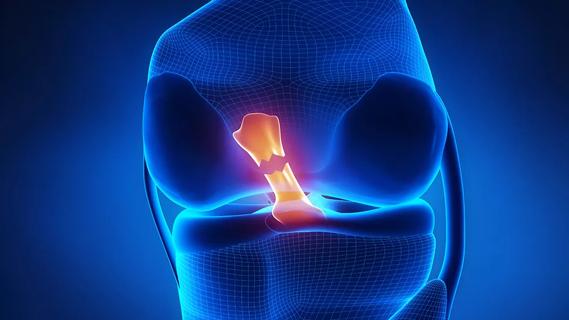
Study reports zero infections in nearly 300 patients
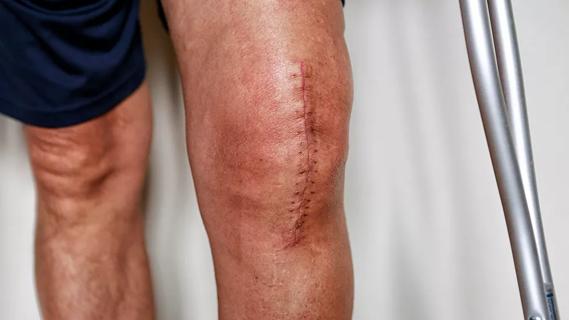
How to diagnose and treat crystalline arthropathy after knee replacement
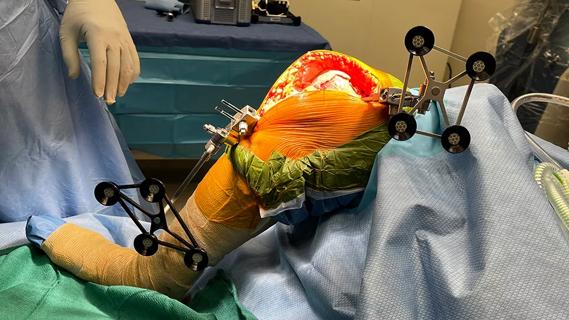
Study finds that fracture and infection are rare

Reduced narcotic use is the latest on the list of robotic surgery advantages

Cleveland Clinic orthopaedic surgeons share their best tips, most challenging cases and biggest misperceptions

How it actually compares to posterior and lateral approaches
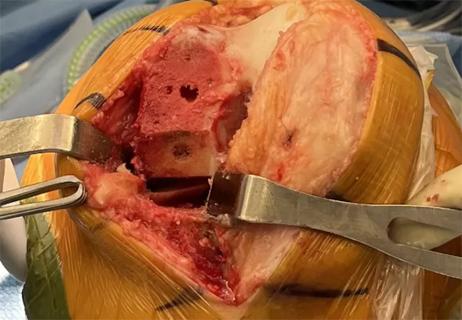
When procedure is performed by high-volume surgeons, outcomes are comparable to total knee replacement
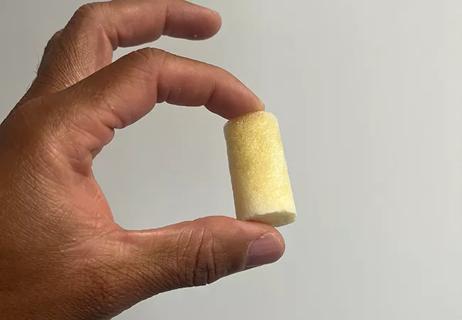
Clot substitute helps rejoin the stumps of a torn ligament